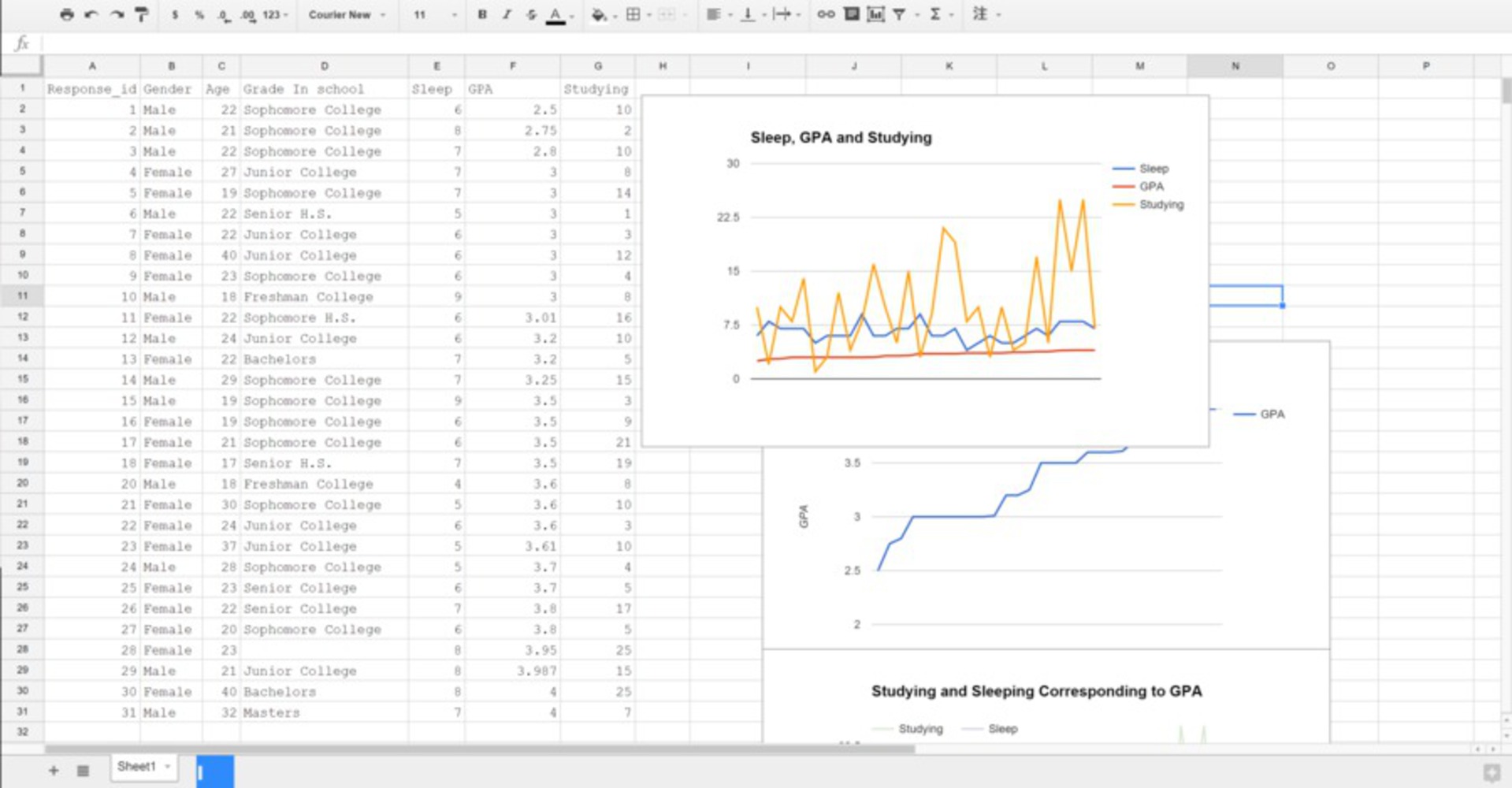Process
I thought about some things that were related to my own life. Sleep and GPA are probably near and dear to the hearts of most college students. I did a quick search for data sets relating to this and found the link I gave above.
I copied over the data into Google Sheets and plotted everything at first (age, sleep, GPA, studying, concentration, etc.), and it gave me a general gist of what everything looked like in relation to each other. However, I really didn't care for the age or concentration, and they wouldn't help me to get my point across, so I just deleted those two columns.
Instead, I wanted to show the correlation between GPA, sleep and studying. So, I plotted them together and realized that studying actually increased with GPA while sleep seemed to stay stagnant. So I went forward with this set because it had data that would help me in my intent.


